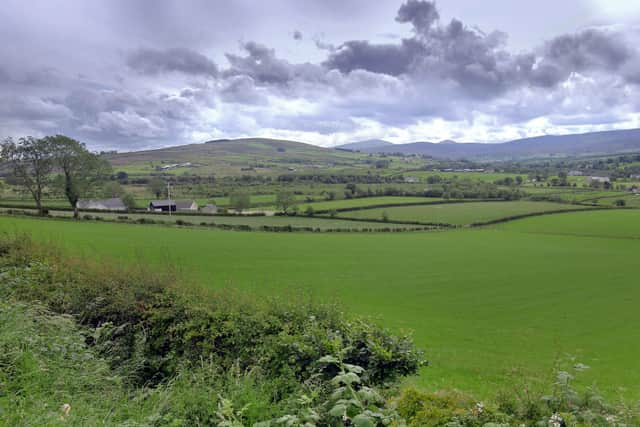Rules on hedge cutting explained


Hedges also sequester carbon and will be a vital part of agriculture’s response to tackling climate change.
The next four years will see Northern Ireland’s above ground biomass, including hedges measured through the Soil Nutrient Health Scheme LiDAR mapping which will help provide a baseline on how much carbon can be sequestered by farm hedgerows and trees.
Advertisement
Advertisement
Hedges are also essential for the survival of pollinators, providing food, shelter and transport corridors for these insects. The Ulster Farmers’ Union (UFU) supports the ‘All Ireland Pollinator Plan’ which has useful guidance on managing farmland including hedges to support bees. Good hedges provide food (flowers) from spring to autumn, and shelter for nesting bees as well as acting as corridors to help pollinators move through the landscape. Neat and tidy intensively managed hedges offer little benefits for wildlife, pollinators, or shelter for livestock.
Cross-compliance rules are in place to protect this habitat and to protect birds nesting in hedges by preventing the cutting of hedges between 1 March and 31 August. The Wildlife and Natural Environment (NI) Act 2011 also protects nesting birds, and it is an offence under this legislation to disturb nesting birds, their chicks, nests or eggs at any time of the year. The PSNI have powers under this legislation.
In addition to hedge cutting, the 1 March – 31 August closed period also applies to tree or scrub cutting and the coppicing of hedges. It should also be noted that hedgerow trees with a trunk diameter greater than 100cm, may only be removed with prior permission from DAERA and permission is also required for the removal of hedges. The UFU would remind farmers to comply with these rules to ensure that payments from the various schemes administered by DAERA are protected as breaches of these rules could result in cross-compliance penalties being applied.
There are some exceptions to the hedge cutting closed period. Hedge cutting is permitted within the closed period where health and safety is an issue e.g., along some roadside hedges. Therefore, if hedges are obstructing roads, pavements, road signs etc. they may be cut back. However, farmers should not cut the field side and should only trim the minimum length and top that is causing obstruction. Checks must also be carried out to ensure that birds are not nesting when this work is carried out. Information on what the Department for Infrastructure requirements are from landowners in relation to road safety and roadside hedges can be found online at https://www.infrastructure-ni.gov.uk/sites/default/files/publications/infrastructure/tree-and-hedge-cutting-notice-2022.pdf
Advertisement
Advertisement
In addition to this exception, DAERA permit a derogation to be issued to the hedge cutting closed period for those planting oil seed rape or grass re-seeds. The hedge cutting derogation introduced in 2015, helps farmers wishing to plant oilseed rape, reseed grass or other herbaceous forage (clovers, Lucerne, sainfoin and forage vetches) on arable land and allows limited flexibility to trim hedges in fields from 15 August. Written permission is required from DAERA before trimming commences otherwise this will be considered a breach of cross-compliance. Farmers can request an application form from DAERA on 0300 200 7842 or by email [email protected]. DAERA will only consider applications for derogations for hedge cutting where the field in question is classified as ‘AR’ on the SAF Form and meets the other conditions. In addition to this, farmers must still comply with the Wildlife and Natural Environment (NI) Act 2011.
Anyone interested in using this derogation must submit the application form to DAERA at least 10 working days before the proposed hedge cutting date. It is vital that farmers make the checks to ensure there are no nesting birds in the hedges to be cut, if there is evidence that nesting birds have been disturbed it will be considered a breach of cross-compliance even if a derogation has been granted.
As summer growth will require some hedges to be trimmed back in the coming weeks where there are safety issues, farmers and contractors should take care to ensure they comply with the various requirements outlined above to avoid unnecessary penalties.